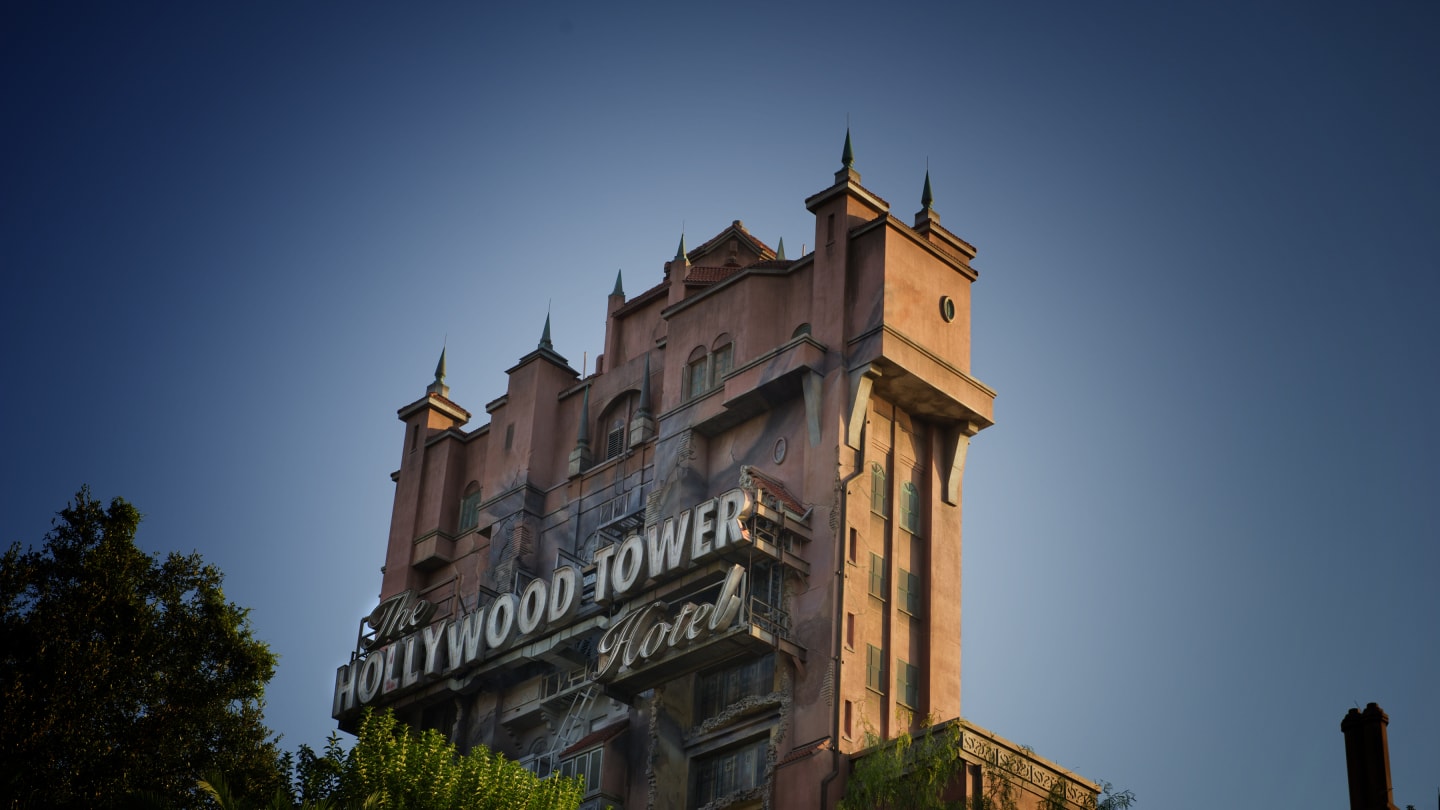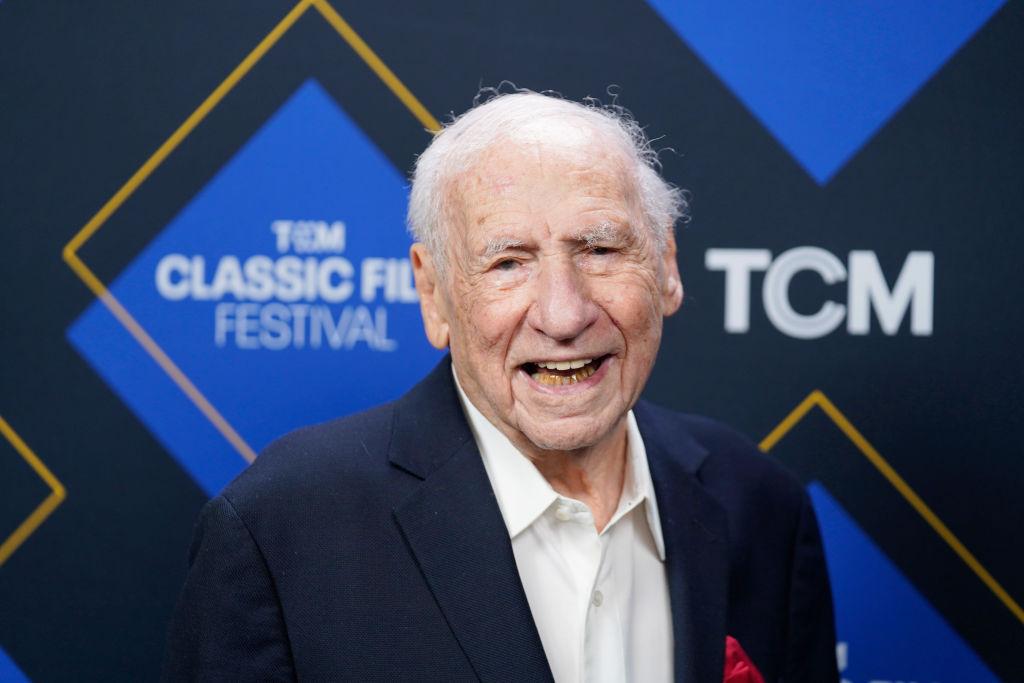
As a long-time Disney enthusiast and someone who grew up watching classic movies and shows, I can’t help but be fascinated by the stories behind some of their most iconic attractions. The Tower of Terror at Disney’s California Adventure is no exception. I’ve always been intrigued by the ride’s darker origins and the various ideas that were considered before it became the thrilling experience we know today.
Among Disney enthusiasts, there’s been ongoing discourse regarding an perceived overabundance of intellectual property (IP) in the theme parks. Critics argue that Disney is building rides not only based on movies but also on brands like Marvel and Star Wars, rather than creating more unique experiences. The debate persists as some fans express a hope for Disney to break free from this fixation.
Thirty years ago, there emerged an attraction at Disney that was among the first significant non-Disney intellectual property (IP) rides for a Disney park. This attraction continues to be one of Imagineering’s greatest achievements during a decade when Disney excelled in this area. Its enduring appeal as a superb IP implementation and a thrilling ride that continues to captivate audiences is a testament to its incredible power, regardless of its theme.
The Tower of Terror.
The name itself is catchy and evocative, sparking excitement. While officially known as the Twilight Zone Tower of Terror, enthusiasts often refer to it as just “Tower of Terror,” a moniker that has stuck due to its implementation in other parks. The attraction’s history is as intriguing as its final form, and it’s worth noting that early concepts for the ride could have led to dramatically different experiences.
The history of the Tower
Interestingly, the journey to this now-iconic Disney ride begins 3000 miles away.
In the late 1980s, during the planning stage for Disneyland Paris (previously named Euro Disney), there was a proposed attraction called Geyser Mountain. This attraction would have been similar to “freefall” rides, which were gaining popularity in other theme parks. The concept was straightforward yet engaging: riders would ascend to a towering structure before experiencing a thrilling free fall.
Disney wouldn’t settle for a simple duplicate, though. They aimed to integrate it with a roller coaster-style track instead. Many early Imagineering concepts didn’t come to pass, but Disney kept them on file. Fortunately, Imagineers didn’t discard anything and this particular idea remained stored away, ready for revival when the opportunity presented itself.
In the early 1990s, while Disney was brainstorming ways to revitalize Disney-MGM Studios, they recognized the need for something extraordinary and sought to introduce more exhilarating rides at their theme parks. A freefall ride seemed like an ideal fit for this vision. However, they lacked a compelling narrative to bring it to life.
The Mel Brooks Hotel

An intriguing initial proposal existed, as Disney planned to create a ride based on the renowned comedian and filmmaker Mel Brooks. Initially, this project would have been themed around his iconic comedy “Young Frankenstein,” allowing visitors to experience the story unfold before their eyes.
I used to imagine Brooks producing a movie set at a haunted hotel where visitors would tour the grounds in golf carts. Picture half of it appearing neglected and in disrepair, while the other half served as the “set” area. A wild idea emerged that guests would be transported directly from Orlando airport to this hotel in a unique vehicle, and upon arrival, they’d be welcomed into a functioning establishment.
During the spooky journey, there would have been Haunted Mansion-esque pranks aplenty: a vampire shaving with no mirror reflection, Frankenstein using mummy bandages as toilet paper, witches brewing in the kitchen, and so forth. Although this concept could have been amusing, Brooks and Disney’s creative visions clashed significantly back then, leading them to part ways. Nevertheless, the hotel concept would persist.
An awards show?

Instead of proposing rides for Imagineers’ new project, they suggested blending films and audio-animatronics in an homage to Hollywood horrors. Named the Creature’s Choice Awards, this attraction would transform into an awards show. Elvira, the curvaceous and charismatic horror hostess, and Eddie Murphy as a Frankenstein monster would co-host the event.
I was thrilled at the thought of Godzilla being recognized in a grand award ceremony, with movies featuring the iconic monster making his way from Tokyo to Disney World. The finale would have been a spectacle to behold, as a gigantic Godzilla robot appeared on stage to “receive” the accolade. Alas, this idea was nixed due to the hefty price tag and instead, they opted for a ride which seemed more sustainable in the long run. It’s intriguing that Disney considered adding a Godzilla-themed roller coaster at Epcot’s Japan pavilion but ultimately chose not to.
A murder mystery
Another concept played on an older idea of a mansion that was home to a murder mystery show where a wrap party for a horror movie has someone bumping off the actors. That might have been a tad too dark, so little wonder it was vetoed fast. Disney hoped to get iconic horror movie star Vincent Price to provide voice and video work with Price seemingly interested. Sadly, before that could go further, Price died in late 1991, although he did record voice work for Disneyland Paris’ version of the Haunted Mansion.
Disney entertained the thought of creating a ride based on Stephen King’s novels, an intriguing collaboration between Disney and the renowned horror author. Sadly, this potential partnership never came to fruition, leaving us with what might have been an extraordinary experience.
The hotel develops
The Imagineers at Disney entertained the concept of creating a hotel with a horror theme, and they gave serious consideration to bringing it to life. Some initial designs bear striking resemblance to the Star Wars Galactic Starcruiser, featuring staff members dressed as 1930s hotel personnel pushing carts around. A delightful touch could be having a guest encounter what seems to be an old man in a chair, who then comes alive and starts talking to them.
The reason Disney discarded this idea, similar to many others that faded away, was their preference for keeping the number of cast members on hand to a minimum. Among the concepts Eisner considered from the earlier Price proposal was a hotel where guests would be immersed in a mystery – a disappearance had once occurred there and the only means of escape was an elevator that descended to the basement exit.
The originator of the idea for the Twilight Zone integration into Disney Studios remains a mystery. For some time, Disney had entertained the thought of incorporating Rod Serling’s groundbreaking series. Eventually, it struck them as brilliant to merge the narrative and make guests the stars in their own unique episodes.
An interesting detail is that Disney attempted to collaborate with Otis Elevator Company, known for their safety reputation after over a century in business. However, they declined as they didn’t want to compromise their image by associating with something that might make their elevators seem less safe. Eventually, Disney convinced them to create a unique system specifically for the ride, once assured it wasn’t intended to function as an actual elevator.
I’ve had the pleasure of experiencing the evolution of thrill rides at Disney parks throughout the years. The Tower of Terror was a legendary attraction that left many of us with goosebumps and heart-pounding excitement. Over time, it transformed into the ride we know today as Guardians of the Galaxy: Mission Breakout in California, and another version graced Disneyland Paris. However, the Tokyo version’s story is a whole different tale.
Why Tower of Terror is different in Tokyo Disneyland
As a gamer, I’ve noticed an intriguing difference between Tokyo Disneyland’s version of the Tower and its American counterpart. This disparity isn’t just due to creative variations; it runs deeper into Japanese culture itself. When American designers initially presented “The Twilight Zone” ride concept to the Oriental Land Company (Tokyo Disneyland’s owners), they encountered an unexpected challenge: most Japanese people were unfamiliar with “The Twilight Zone,” a TV show that never gained popularity in Japan.
An intriguing distinction exists between how Japanese culture perceives ghosts and that of Western countries. Consequently, Tokyo’s Haunted Mansion is situated in Fantasyland – a testament to their belief that ghost stories are akin to fairy tales. Disney Imagineers creatively adapted this concept, crafting a new narrative for the ride centered around Harrison Hightower III. He was an explorer who disrespected a mystical idol belonging to a local tribe, ultimately leading to a disastrous elevator ride.
Before being transformed into an attraction, the once-abandoned Hightower Hotel now serves as an intriguing introduction to the main storyline of the ride. This unexpected twist retains the essence of the rollercoaster’s excitement and provides a unique experience for Japanese visitors.
An intriguing alternative to the present-day beloved Tower of Terror ride is the Mel Brooks concept that was proposed. This idea could have added an enjoyable twist or even a darker edge. However, it’s hard to dispute that the Twilight Zone theme has significantly contributed to the iconic status the attraction holds today.
Read More
- Clash Royale Best Boss Bandit Champion decks
- Best Hero Card Decks in Clash Royale
- Brawl Stars December 2025 Brawl Talk: Two New Brawlers, Buffie, Vault, New Skins, Game Modes, and more
- Clash Royale December 2025: Events, Challenges, Tournaments, and Rewards
- Best Arena 9 Decks in Clast Royale
- Call of Duty Mobile: DMZ Recon Guide: Overview, How to Play, Progression, and more
- Clash Royale Witch Evolution best decks guide
- Cookie Run: Kingdom Beast Raid ‘Key to the Heart’ Guide and Tips
- Clash of Clans Meltdown Mayhem December 2025 Event: Overview, Rewards, and more
- All Boss Weaknesses in Elden Ring Nightreign
2024-07-17 14:27